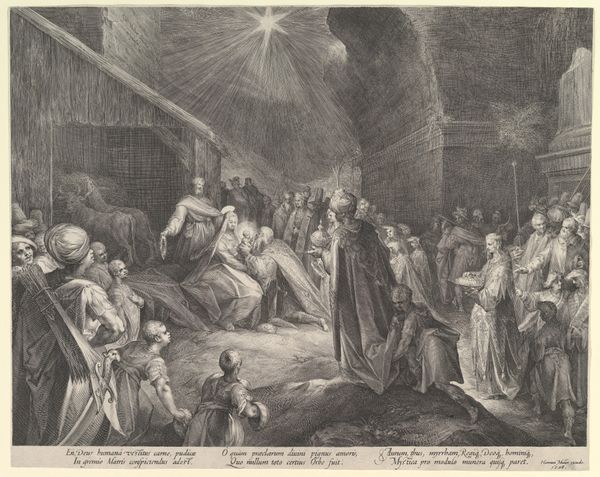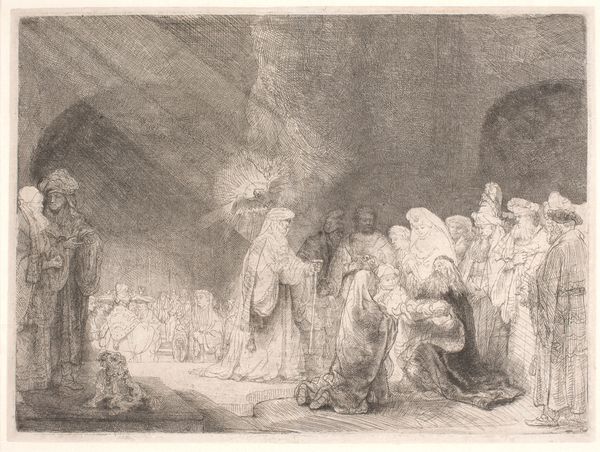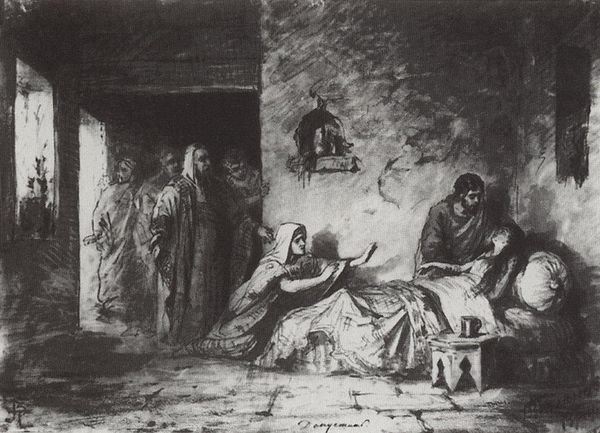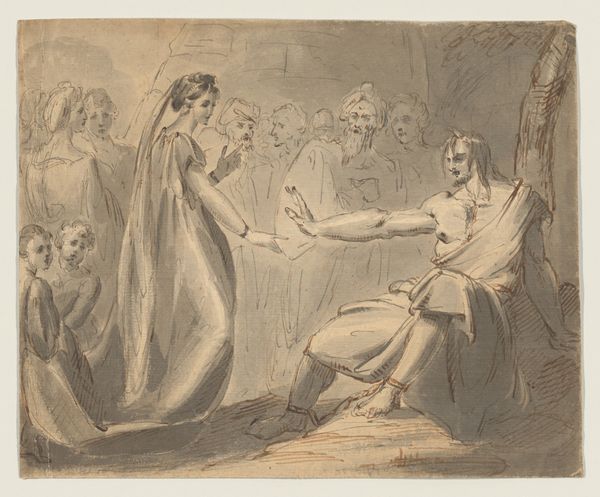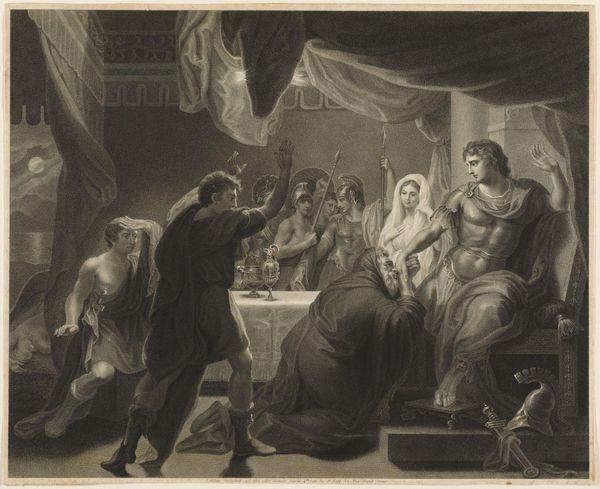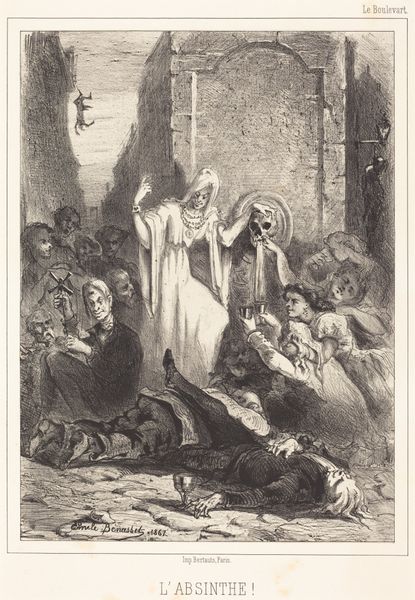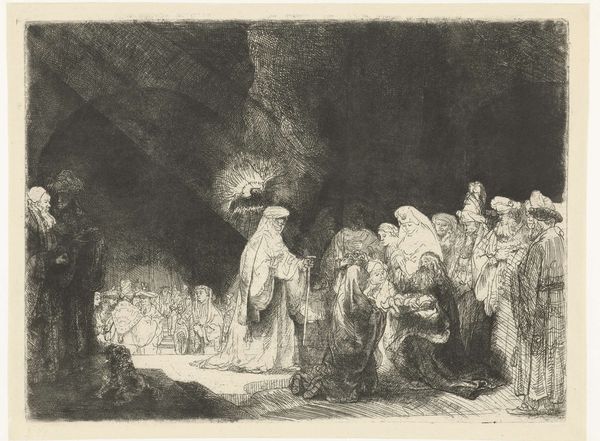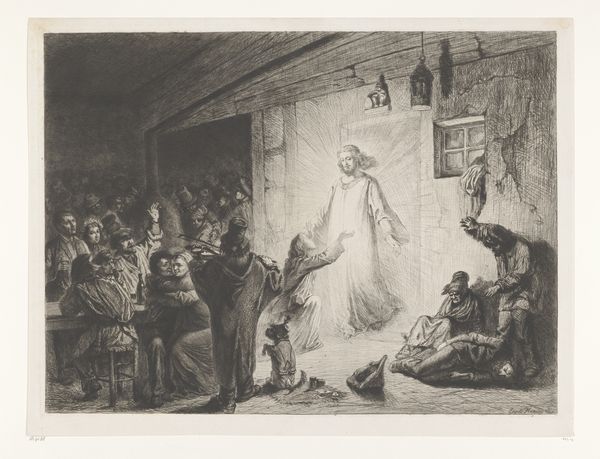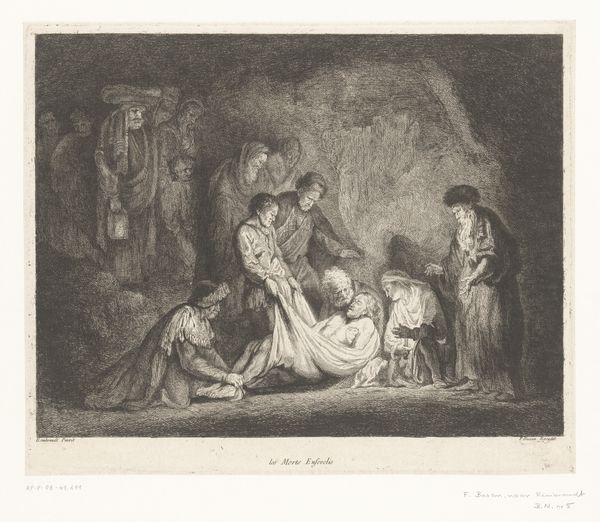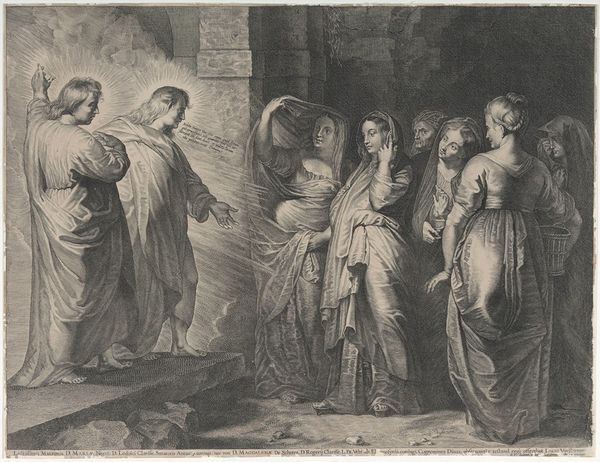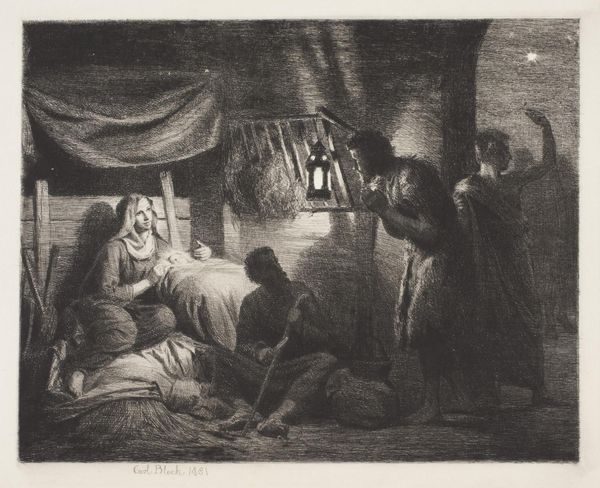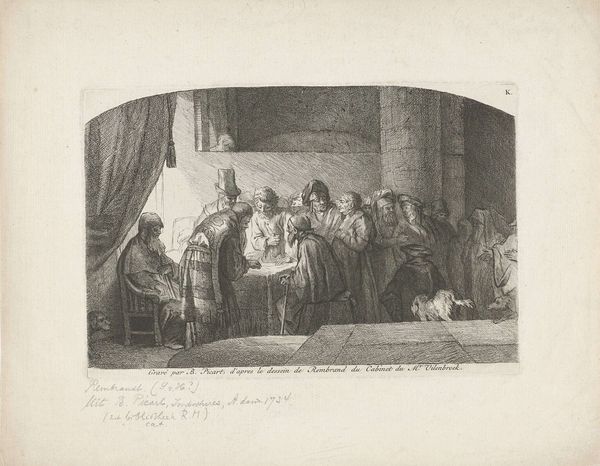
drawing, paper, ink, charcoal
#
portrait
#
pencil drawn
#
drawing
#
narrative-art
#
pencil sketch
#
charcoal drawing
#
figuration
#
paper
#
charcoal art
#
ink
#
pencil drawing
#
romanticism
#
portrait drawing
#
genre-painting
#
charcoal
#
history-painting
#
academic-art
Dimensions: height 109 mm, width 146 mm
Copyright: Rijks Museum: Open Domain
Curator: This arresting work is titled "Priest Among Veiled Women," created in 1845 by Johannes de Mare. The media include drawing and ink on paper. What are your first thoughts on encountering this, shall we say, historical tableau? Editor: A wave of melancholy washes over me. The contrast of light and shadow is extreme, producing a deeply mournful scene. Curator: The tonal gradations, certainly, reinforce the emotionally fraught atmosphere. The composition centers on a clergyman amidst several women whose faces are obscured by veils. Consider how the artist employed chiaroscuro to subtly shape each figure. Note, too, the arrangement of their bodies creates both connection and implied boundaries. Editor: Yes, the women closest to the cleric appear contemplative, perhaps receptive to his counsel. But beyond them, observe the ghostly congregation raising their arms as if pleading toward the night sky. Their posture seems frantic, possibly desperate. I wonder, what historical circumstance might have compelled the artist to make this composition? Is it a specific historical narrative or a broader commentary? Curator: Art of this era often explored societal anxieties. We see the artist referencing the visual vocabulary of Romanticism, leaning toward darker imagery and dramatic light to evoke feelings rather than specific narratives. This focus allows viewers to project contemporary social anxieties onto a generalized historical scenario. It touches upon then-common concerns of social order, piety, and the role of women. Editor: That interplay between artistic technique and societal context is crucial. If this work were commissioned for a religious institution, its function would vary significantly compared to one intended for open exhibition. I imagine its reception was similarly varied. How did art critics view De Mare's technique at the time, and did viewers see the historical reflection the artist intended? Curator: Such inquiry shifts us towards deeper investigations of social reception, patronage models, and contemporary press surrounding Johannes de Mare. For now, perhaps our audience can explore this further armed with a fresh awareness of the work's formal strategies. Editor: An evocative experience for any viewer inclined to contemplate the shadows of the past. Thank you.
Comments
No comments
Be the first to comment and join the conversation on the ultimate creative platform.
